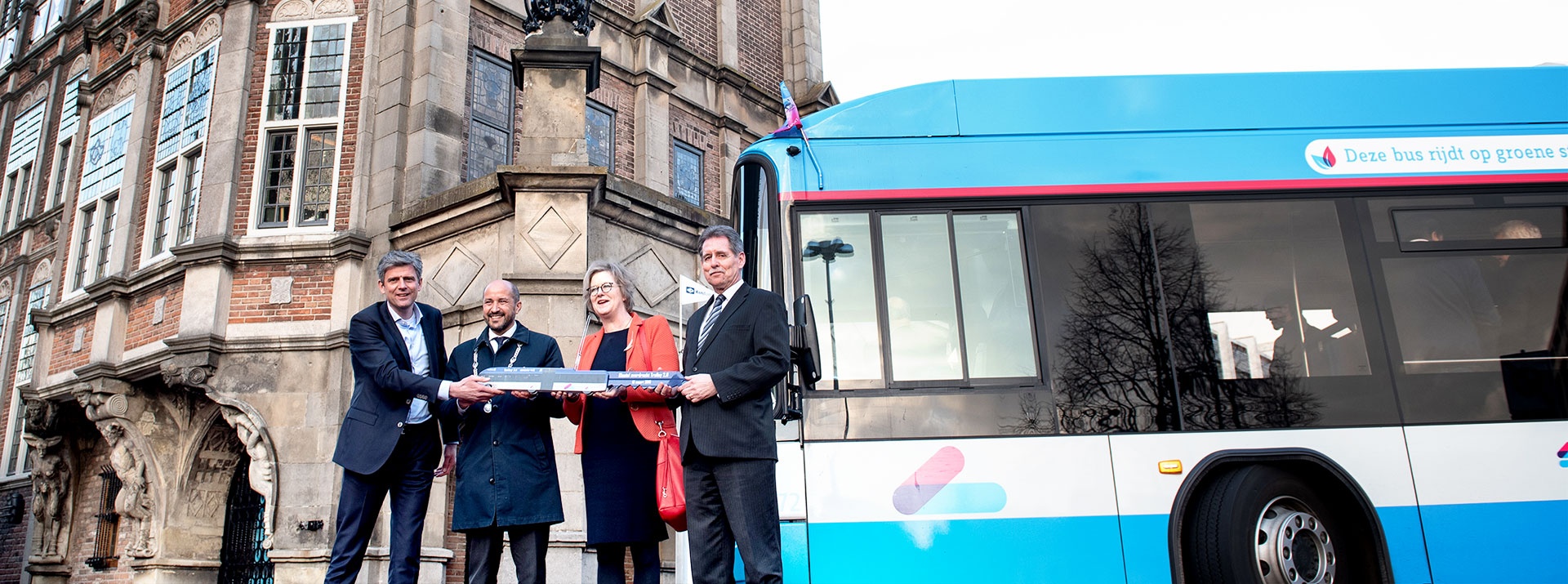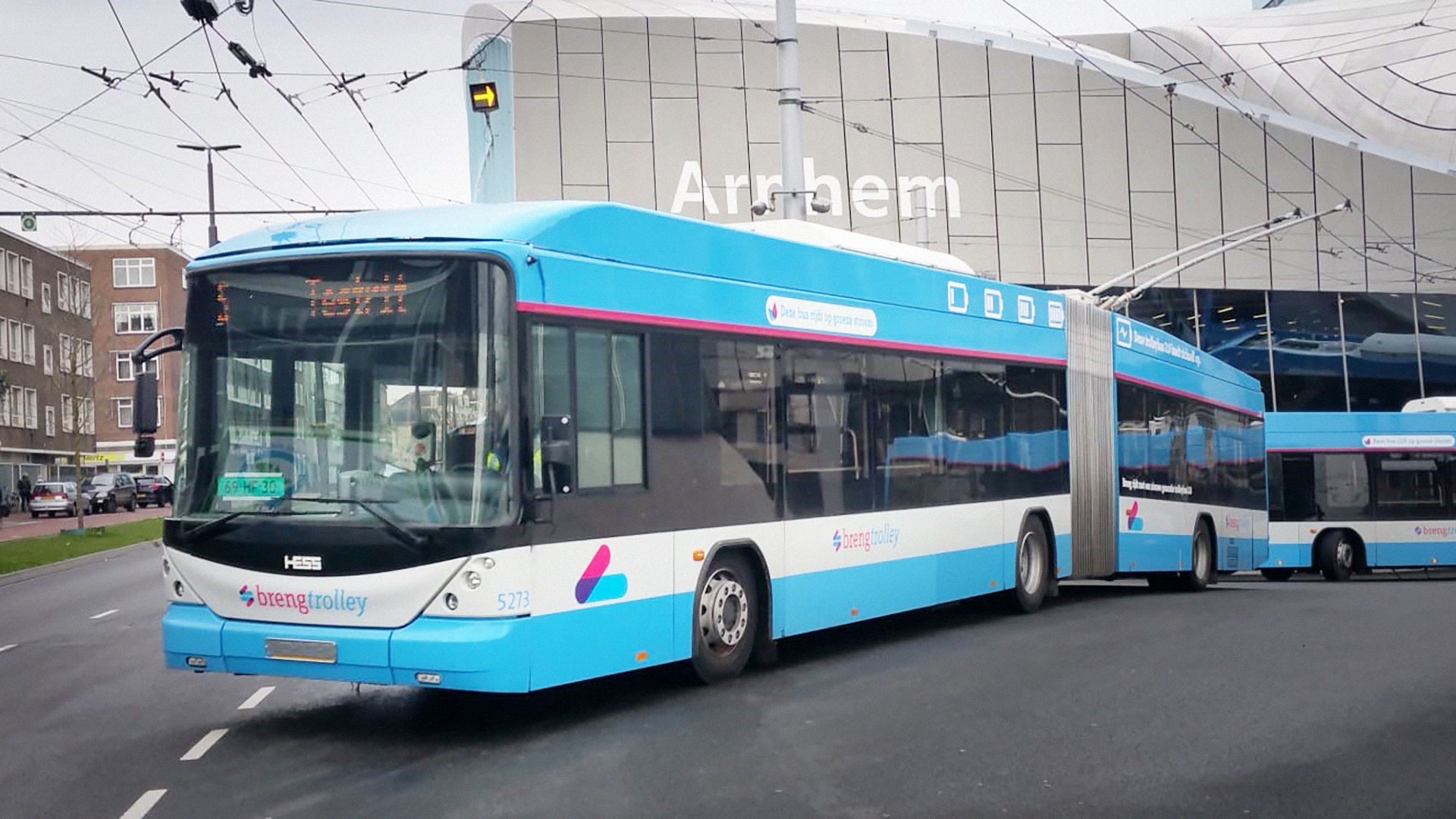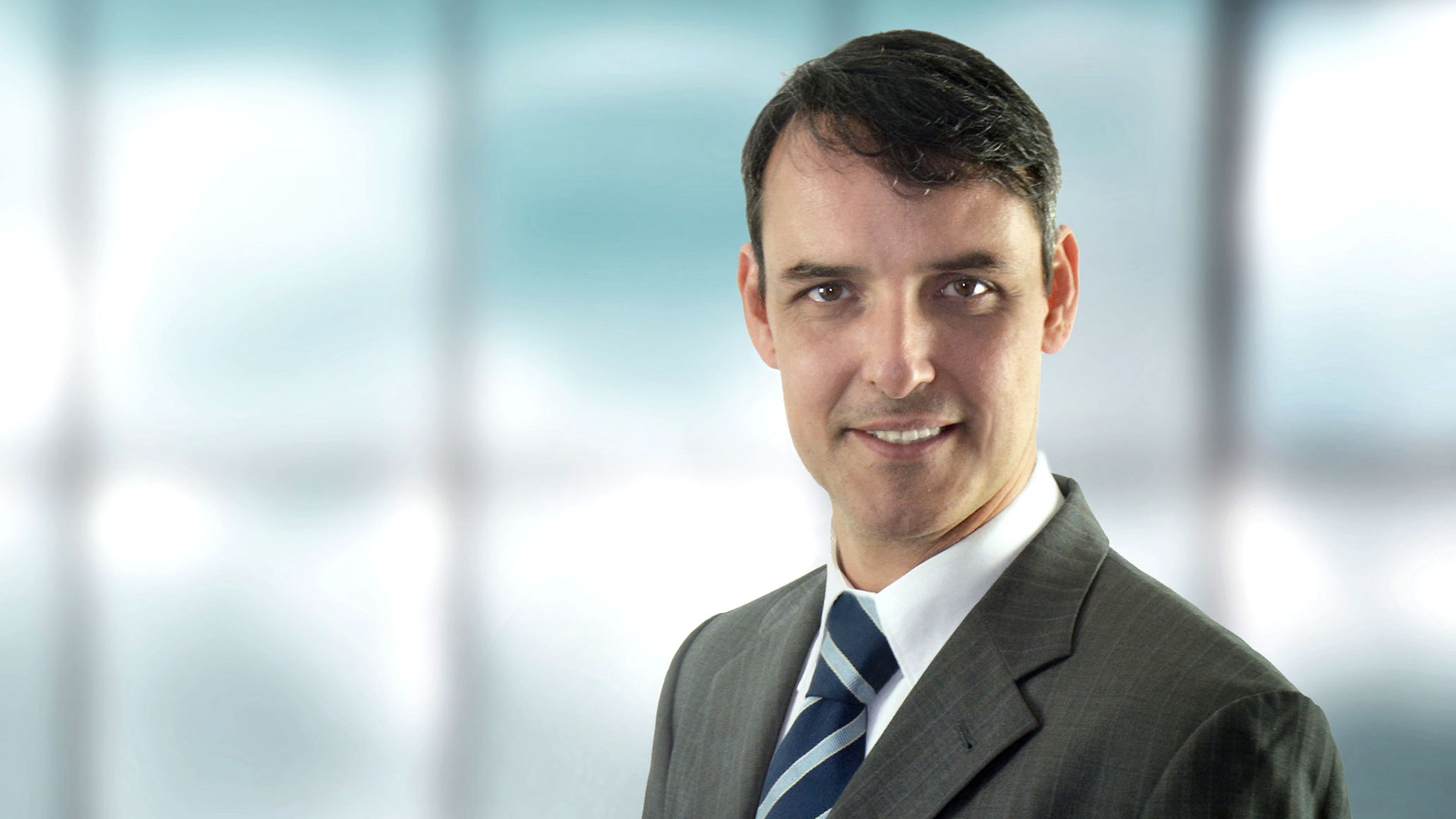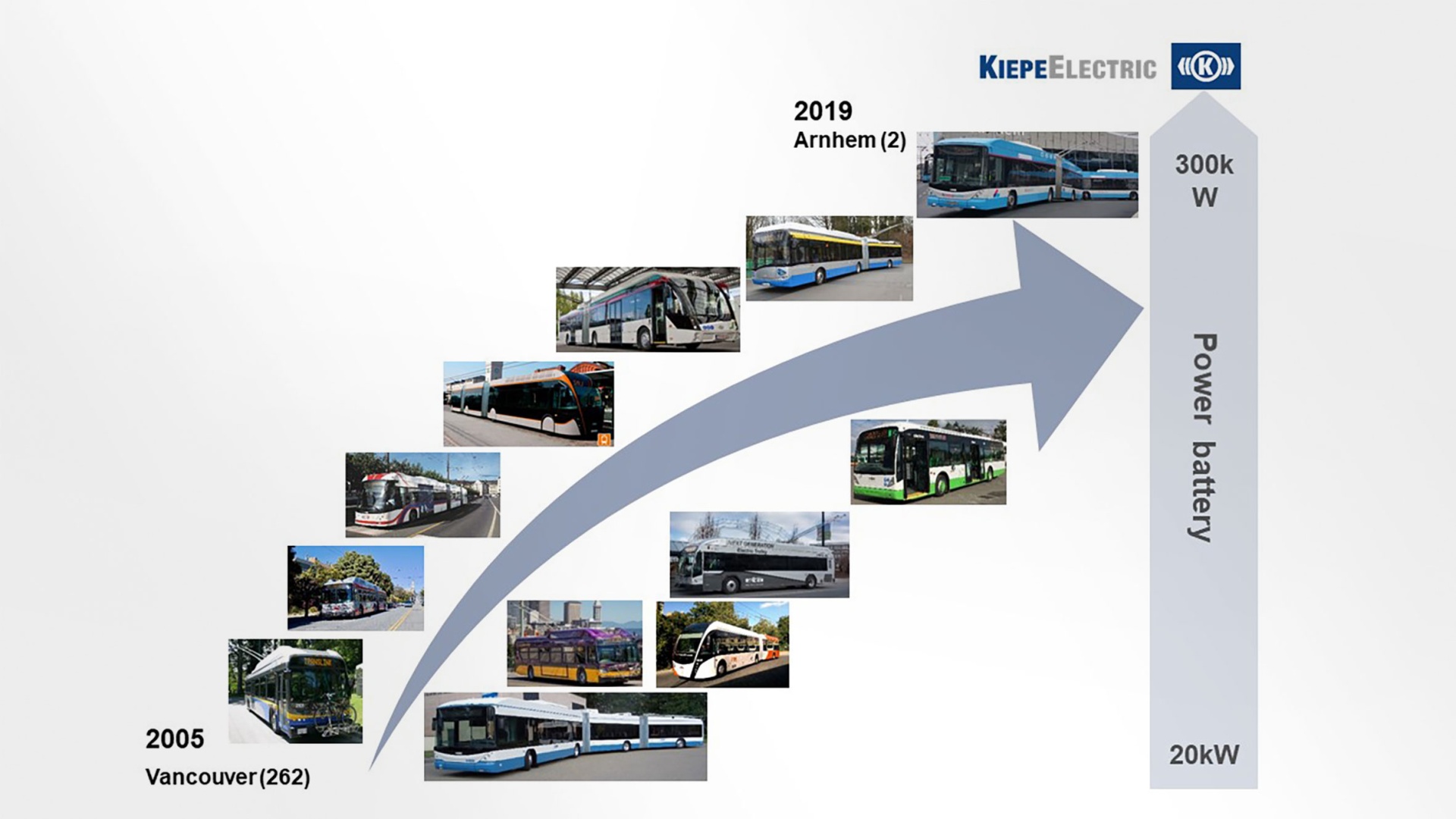
In Arnhem, the Netherlands, trolleybuses can now run without power cables, thus becoming electric buses as well. The "IMC500" – a development by Kiepe Electric – makes it possible.
40 vehicles, a total route of 64 kilometers, 270 kilometers of cable, 4,026 masts, 8 million passengers per year: these figures describe the current trolleybus network in Arnhem. As early as 1949, its Line 1 was the first in the Netherlands to go into operation. Since then the network has been continuously expanded.
The trolleybus becomes an electric bus
On 18 March 2019, two 18-meter electric buses of the Arnhem fleet, retrofitted with the latest IMC500 equipment from Kiepe Electric, made their landmark debut. Thanks to In Motion Charging, this trolleybus 2.0 can extend its radius to routes without electric overhead lines, in this case between Oosteerbeek and Velp. With the ability to draw up to 500 kW of energy from the overhead line during travel, the traction battery can be charged even while the vehicle is accelerating and supplying the auxiliary loads.

No need for breaks to charge the batteries
As an innovative solution for buses in local public transport, the IMC500 drive system offers clear advantages over other types of drive. Depending on the route and requirements, the bus can drive beneath overhead lines or entirely independently of them. Breaks for charging the batteries are no longer required. Even during uninterrupted 24-hour operation, the batteries can charge up while driving. The heating or air conditioning can be simultaneously switched on and the batteries charge so gently that the power lines do not get overloaded. Even several buses can be charged on the same section of route thanks to smart control: they act as a self-learning system and share their knowledge of the optimal charging strategies with each other in a cloud.
Battery range significantly increased
In addition, the range of the batteries was increased by making the traction converter and on-board power converter more efficient. This boosted the performance of the battery and battery charger by a factor of 1.5 and 2, respectively. As a result, an 18-meter bus with IMC500 technology only has to travel 20 percent of its route beneath overhead lines.

We have been supplying electrical traction equipment for the city's trolleybuses for around 30 years.
Dr. Marcel Manheller – Senior Project Manager Bus & eMobility at Kiepe Electric
Development of the In Motion Charging drive system continues
There is a reason why Kiepe Electric's IMC500 is making its debut in Arnhem, of all places: "We have been supplying electrical traction equipment for the city's trolleybuses for around 30 years," explains Dr. Marcel Manheller, Senior Project Manager Bus & eMobility at Kiepe Electric. "As part of the 'E-Bus2020 IMC' funding project, which was awarded in 2016 by the Rhine-Waal Euroregion, a German-Dutch public body, in cooperation with eight partners from Gelderland to North Rhine-Westphalia, we continued the development of our IMC drive system. Around 600 buses worldwide are now using this system to run with zero emissions and very low noise; an additional 600 have been ordered.

Electric buses in Arnhem as testing ground for IMC500
The vehicles in Arnhem provide a testing ground for the latest, even more powerful IMC500 version. Further deployments are planned after a successful test phase, and not only in other trolleybuses from the current fleet of the operator Connexxion. In the future, entirely new use cases will open up for In Motion Charging.
Overhead lines to power charging stations for e-cars and e-bikes
The long-term goal of "E-Bus2020 IMC" is to replace the majority of the existing biogas buses in Arnhem with IMC-powered buses. "Our new product could potentially be used in around 200 vehicles," estimates Dr. Marcel Manheller. It is planned to combine the concept with a Smart Grid that includes renewable energy sources such as solar and wind energy in the overhead line network and also supplies charging stations for e-cars and e-bikes. This flagship project will make Arnhem's transport even cleaner overall – and will make the city a pioneer in meeting the Dutch government's target of reducing emissions by 49 percent by 2030 and by 95 percent by 2050, compared with 1990 levels.
The vision of zero-emission public transport
Dirk Zuther, Head of Bus and eMobility at Kiepe Electric, was highly satisfied at the official presentation of the Trolleybus 2.0 in mid-March: "Arnhem has a vision of zero-emission local public transport. We are proud to make our contribution, as Kiepe Electric, within a groundbreaking EU project."
Exceeding expectations for charging performance and range
Dr. Marcel Manheller is equally pleased with the "smooth progress" to date: "Our expectations for charging performance, charging time and range have been exceeded." This means that IMC500 can be transferred to other cities as a technology for all bus sizes and charging concepts. Their energy supply is based on an internationally established standard for overhead lines in more than 300 cities. Deployments are already planned in Verona, Modena, Solingen, Fribourg, Geneva and Pescara.